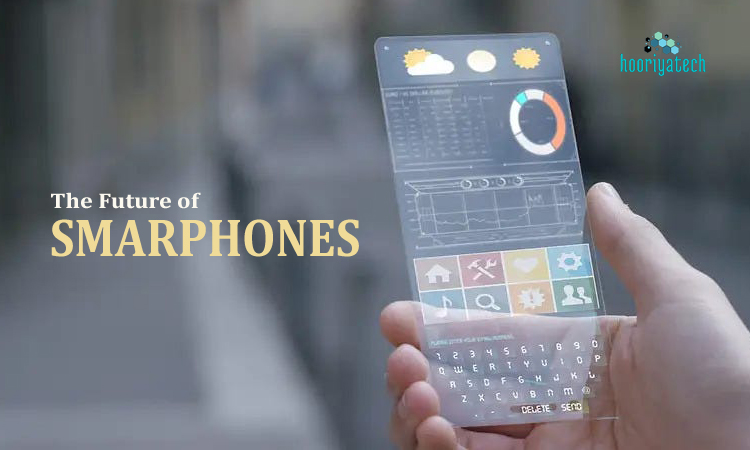How Mobile Phones are Evolving: The Future of Smartphones

Smartphones have become an integral part of daily life, evolving at a rapid pace with new technologies and designs. As the world becomes more connected and reliant on digital communication, the future of smartphones looks more exciting than ever. In this article, we explore how mobile phones are evolving, focusing on current innovations, design trends, and the challenges and opportunities they present.
The Evolution of Mobile Phones
The journey of mobile phones started with bulky devices meant only for making calls. Over the years, they transformed into sleek, multipurpose devices we rely on today. The first wave of change came with the introduction of smartphones in the mid-2000s, when features like touchscreens, app stores, and high-quality cameras became the norm.
Smartphones revolutionized communication, entertainment, and productivity, integrating everything from emails and web browsing to social media and mobile banking into a single device. Today, we see a shift towards more advanced technologies like foldable displays, AI integration, and 5G connectivity, signaling a new era of mobile innovation.
Current Innovations in Smartphone Technology
As we look towards the future, several key innovations are shaping the smartphone landscape:
- Foldable and Flexible Displays
Foldable and flexible displays are among the most exciting innovations in mobile technology. Companies like Samsung and Huawei have introduced foldable phones that offer users the versatility of both a compact smartphone and a larger tablet. These devices utilize advanced OLED and AMOLED screens that can bend without breaking, pushing the boundaries of what a mobile phone can look like and how users interact with it.
As this technology matures, we can expect foldable phones to become more durable, affordable, and integrated into everyday life.
- 5G Connectivity
5G technology is transforming the way we use smartphones. With significantly faster download and upload speeds, reduced latency, and improved network reliability, 5G opens new possibilities for mobile gaming, video streaming, and virtual communication.
Beyond faster internet, 5G allows for more seamless integration of IoT (Internet of Things) devices, enabling smart homes, autonomous vehicles, and advanced AI-powered services to thrive. As 5G networks continue to expand globally, the future of mobile connectivity is set to become faster and more efficient than ever before.
- AI and Machine Learning Integration
Artificial intelligence (AI) and machine learning are becoming essential components of modern smartphones. From enhancing camera performance to personalizing user experiences, AI powers many of the features we now take for granted.
AI-based personal assistants like Siri and Google Assistant are getting smarter, enabling more intuitive voice commands, predictive text input, and real-time language translation. Machine learning algorithms also improve mobile security, optimize battery usage, and enhance app functionality, making smartphones more capable and intelligent.
- Biometric Security Advancements
Security is a top priority for smartphone manufacturers, and biometric advancements are at the forefront of protecting user data. Initially, fingerprint sensors were the gold standard, but today, facial recognition and iris scanning technologies are becoming more prevalent.
With the advancement of 3D facial recognition systems, mobile phones can offer faster, more secure authentication methods. These systems, combined with AI, continue to evolve, ensuring that smartphones remain safe, secure, and convenient for users.
Design Trends: What’s Next for Smartphone Aesthetics?
Smartphone aesthetics are continually evolving to meet user demands for sleek, modern designs. One prominent trend is the push toward bezel-less displays, where the screen takes up nearly the entire front surface of the phone. This trend creates an immersive viewing experience, ideal for watching videos, gaming, and multitasking.
Another design trend gaining traction is modularity. While still in its early stages, modular phones offer users the ability to upgrade specific components, such as cameras or batteries, without purchasing an entirely new device. This approach not only appeals to tech enthusiasts but also promotes sustainability by reducing electronic waste.
Additionally, the rise of wearables, such as smartwatches and wireless earbuds, is influencing smartphone design. As these accessories become more integrated with smartphones, we may see devices designed with more focus on compatibility and seamless interaction between wearable technology and mobile phones.
Challenges and Opportunities in the Future of Smartphones
While the future of smartphones is filled with exciting potential, there are still challenges that must be addressed to unlock their full potential.
Battery Life and Charging Technology
One of the most significant ongoing challenges in smartphone development is battery life. As smartphones become more powerful, with larger screens and advanced features, they demand more energy. While battery technology has improved over the years, it still lags behind the other advancements in smartphones.
However, new fast-charging solutions and wireless charging options are emerging, providing users with quicker, more convenient ways to keep their devices powered. The introduction of solid-state batteries also holds promise for longer-lasting and safer battery performance in the future.
Privacy and Security
As smartphones store more personal and sensitive data, the importance of privacy and security is paramount. Biometric advancements, encryption, and AI-driven security measures help protect user information, but as hackers become more sophisticated, smartphone companies must continually innovate to stay ahead.
The challenge lies in balancing convenience with security, ensuring that future smartphones remain user-friendly while safeguarding data against increasingly complex threats.
Global Accessibility
Another critical consideration is global accessibility. While premium smartphones feature cutting-edge technology, many people around the world still lack access to affordable smartphones. As technology advances, manufacturers must find ways to produce cost-effective devices that provide a balance between affordability and functionality.
Bridging this digital divide offers an opportunity for companies to tap into new markets and help close the gap in global digital access, ensuring more people benefit from mobile connectivity.
Conclusion
The future of smartphones is undeniably exciting, with innovations in foldable displays, 5G connectivity, AI integration, and biometric security leading the charge. Design trends are pushing the boundaries of what we expect from smartphones, while challenges such as battery life, privacy, and global accessibility present opportunities for further growth and improvement.
As smartphones continue to evolve, they will remain central to our lives, transforming how we communicate, work, and entertain ourselves. With each new development, mobile phones are not just becoming smarter—they’re reshaping the way we interact with the world.




